We have completed our organic handler certification for animal feed. Please view the products page for current price list.
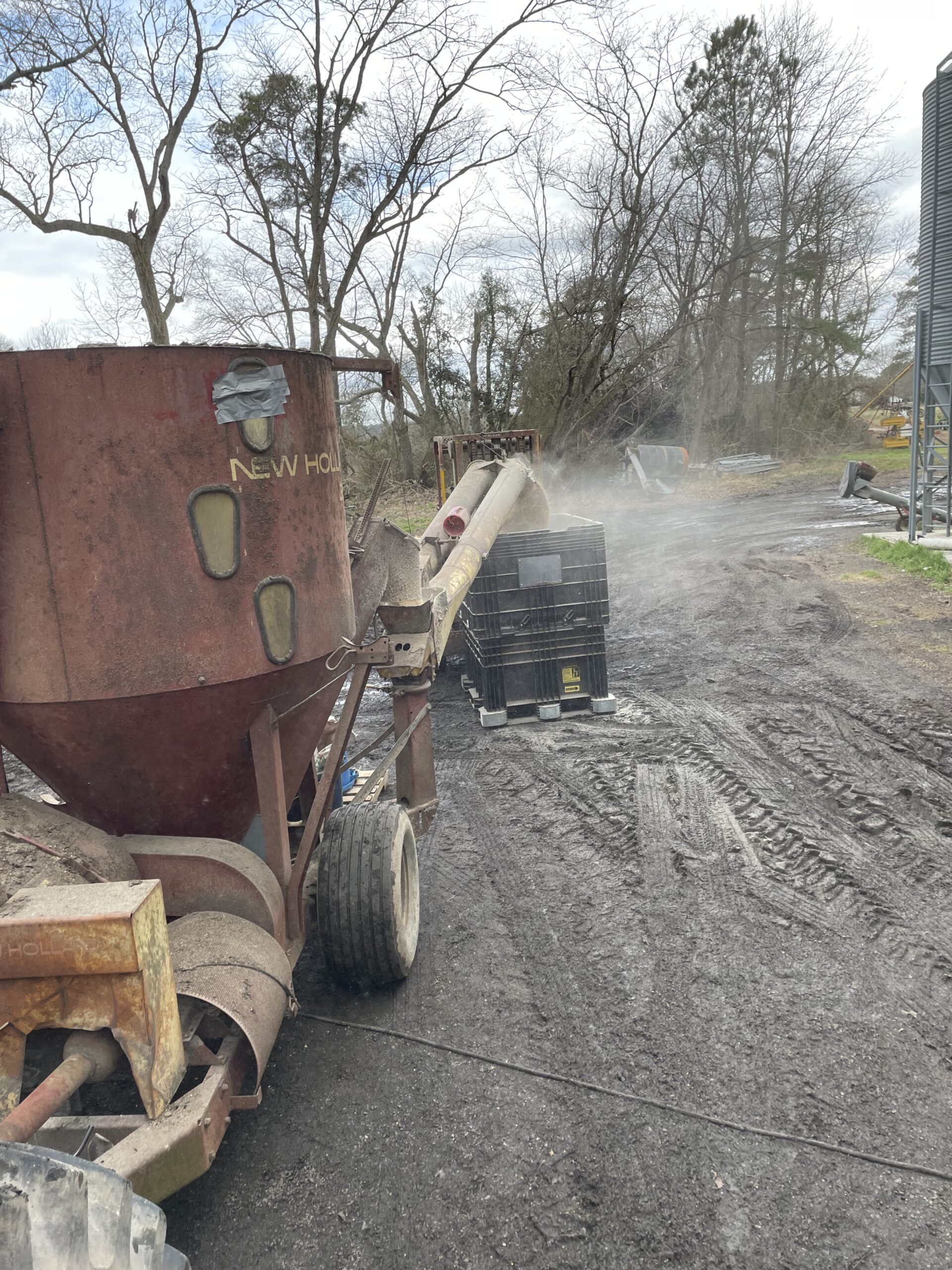
Permanent link to this article: https://www.cutfreshorganics.com/organic-feed/
The first week of February had highs in the 50’s and 60’s and we hadn’t had any significant rain for a couple weeks. Wheat and barley comes out of dormancy with sustained temperatures that high. It needs a small amount of fertilizer to feed on and encourage tillering (when the plant makes multiple stalls) which is important for yield and competing with weeds.
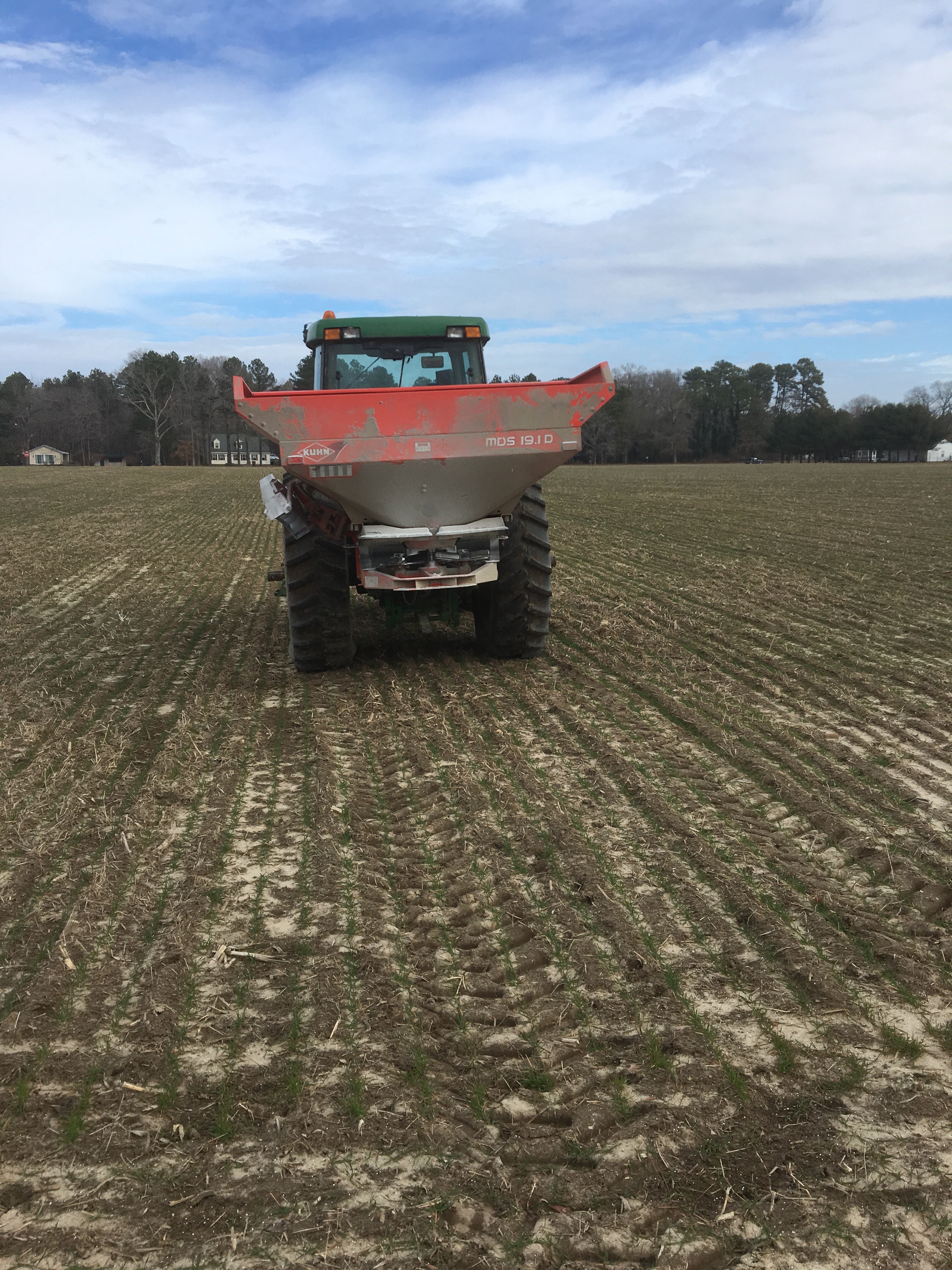
This image is of Frederick soft white winter wheat. This first round of fertilizer was 127 lbs per acre of 15-0-1 Chilean Nitrate (allowed in organic production).
Permanent link to this article: https://www.cutfreshorganics.com/fertilizing-organic-wheat-in-early-february/
Nu East wheat planted December 17th. The field has had many inches of rain on it since then and it is not one of my better drained fields. Where water is not standing, the wheat is just popping out of the ground. I’m sure yield will suffer but at least the field is salvageable. Hopefully 4 out of the 5 acres in this field will be worth fertilizing and harvesting.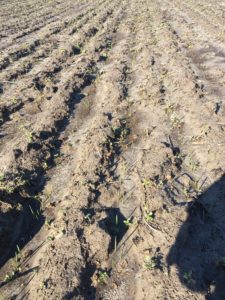
Permanent link to this article: https://www.cutfreshorganics.com/late-planted-wheat/
I built a 12 row, 30 inch row crop flamer last year (matches the 12 row planter I bought a year ago). I used a kit from Flame Engineering. I set it up so there is 1 torch per row set directly over the row and angled to the back. A lot of flamers are set up with 2 torches per row where they cover most of the ground surface. Since, I will definitely come back and cultivate, the row middles where the torch doesn’t burn, will definitely have all the weeds knocked out by the cultivator sweep. Usually, the sweep misses weeds in the row because by the time the cash crop is big enough to cultivate without covering it with soil, the weeds there are too tall to be covered. Flaming kills these little emerging weeds. The ones that germinate between flaming and cultivating are usually small enough so the cultivator sweep can cover them with soil that it pushes up around the crop row.
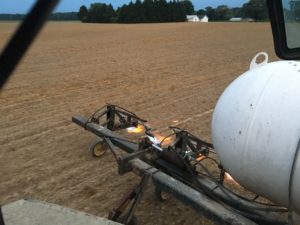
Flaming soybeans where cotyledons were visible. I didn’t see any soybeans killed from this last minute timing.
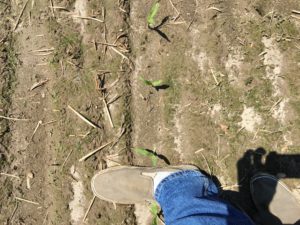
This is corn that was flamed about 4 days before the pic. It has greened back up after flaming. (Leaves above the ground will get burned back a little it). It’s difficult to see, but there is a band as wide as the length of my foot with little burned weed seedlings (mostly pigweed). In the row middles, there are still green weeds that were easily knocked out with the cultivator later.
I can flame corn after emergence until the growth point is exposed which is up to 6 leaves. I like to flame at 4 leaves or less. This works well since most weeds have germinated by then so I’m able to burn them in a band by the row. By the time more weed seeds germinate in the next flush, the corn is tall enough to cultivate aggressively.
Soybeans and other beans, must be flamed before they have true leaves. If they are cracking the ground, they need to be flamed that morning at the latest. Not as many weeds have germinated by 4-7 days after soybean planting (time of flaming) as have germinated when corn can be flamed (2 weeks or so after planting). Delaying soybean planting for a few days after final tillage is a method to make sure more weeds have germinated by time to flame. Last year had such small windows to plant, that delaying planting wasn’t usually possible.
For this year, I plan to set up a tine weeder so I can scratch out small weeds once the soybeans have true leaves and I can no longer flame.
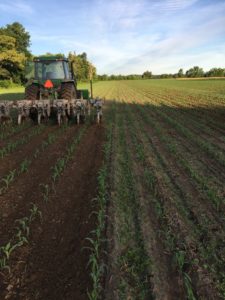
This shows where weeds were killed by earlier flaming around the row. The cultivator easily knocks out the weeds in the row middles here in this first cultivation
Permanent link to this article: https://www.cutfreshorganics.com/row-crop-flaming/
Permanent link to this article: https://www.cutfreshorganics.com/transitional-soybean-roasting/
We’re starting another year of feed making. With little demand for certified organic feed, we’ve been making feed using our transitional grain for many years now. This grain is grown exactly the same way as the certified organic grain. The only difference is that the land on which it is grown hasn’t been chemical free for 3 years. I’ve been transitioning 60-70 acres at a time from my family land which provides the grain for feedback making.
Permanent link to this article: https://www.cutfreshorganics.com/on-farm-processing-of-transitional-grain/
Permanent link to this article: https://www.cutfreshorganics.com/fall-harvest-time/